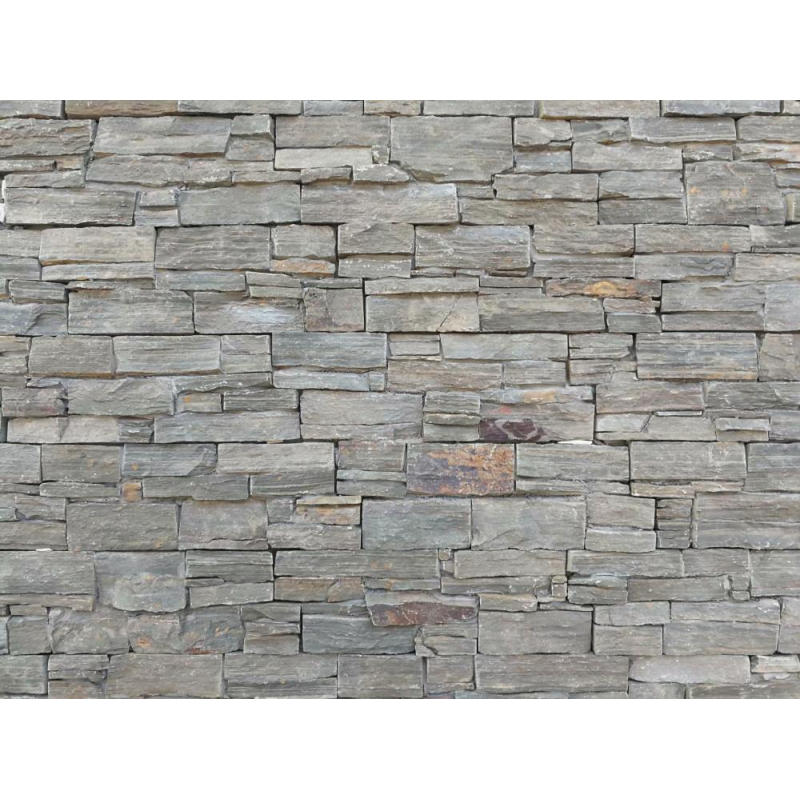
సహజ రాయి గృహాలు మరియు తోటలలో ఉపయోగించే అత్యంత సాధారణంగా ఉపయోగించే పదార్థాలలో ఒకటి. కానీ మీ నిర్దిష్ట రాతి పలకలు, ఇటుకలు లేదా ఫ్లోరింగ్ ఎక్కడి నుండి వచ్చిందో మీరు ఎప్పుడైనా ఆశ్చర్యపోయారా?

Natural stone was created thousands of years ago when the Earth was just a ball of mineral gases. As these gases began to cool down, they compressed and solidified to form the world we know today. It was during this process that natural stone was formed – the type of stone created depends on what type of minerals were combined at that time. This was a slow process that occurred over millions of years. As the Earth began to settle, many of these seams of stone were gradually pushed to the surface by heat and pressure, creating the large formations we see today.
Stone can come from anywhere in the world, and the type of stone is determined by its origins. There are quarries in America, Mexico, Canada, Italy, Turkey, Australia, and Brazil, as well as many other countries around the globe. Some countries have multiple natural stone quarries, whilst others only have a few. Let’s look in closer detail at where particular stones originate and how they were formed.
మార్బుల్ is the result of limestone that has been altered through heat and pressure. It’s a versatile stone that can be used on virtually anything – statues, stairs, walls, bathrooms, counter tops, and more. Usually seen in white, marble is also common in black and grey tints, and has great weather endurance.
క్వార్ట్జైట్ వేడి మరియు కుదింపు ద్వారా మార్చబడిన ఇసుకరాయి నుండి ఉద్భవించింది. రాయి ప్రధానంగా శ్వేతజాతీయులలో వస్తుంది, కానీ గోధుమ, బూడిద లేదా ఆకుపచ్చ రంగులతో కూడా చూడవచ్చు. ఇది కష్టతరమైన సహజ రాయి రకాల్లో ఒకటి, ఇది ముఖభాగాలు, కౌంటర్టాప్లు మరియు హెవీ డ్యూటీ రాళ్ళు అవసరమయ్యే ఇతర నిర్మాణాలను నిర్మించడానికి ఇది అద్భుతమైన ఎంపిక.
గ్రానైట్ వాస్తవానికి శిలాద్రవం (లావా)కి బహిర్గతమయ్యే అగ్ని రాయి మరియు వివిధ ఖనిజాలకు గురికావడం ద్వారా మార్చబడింది. రాయి సాధారణంగా ఏదో ఒక సమయంలో అధిక అగ్నిపర్వత కార్యకలాపాలను చూసిన దేశాలలో కనుగొనబడింది మరియు నలుపు, గోధుమ, ఎరుపు, తెలుపు మరియు మధ్యలో ఉన్న దాదాపు అన్ని రంగుల నుండి భారీ రకాల రంగులలో లభిస్తుంది. గ్రానైట్ దాని యాంటీ బాక్టీరియల్ లక్షణాల కారణంగా వంటశాలలు మరియు బాత్రూమ్లకు గొప్ప ఎంపిక.
సున్నపురాయి పగడపు, సముద్రపు గవ్వలు మరియు ఇతర సముద్ర జీవుల కుదింపు ఫలితం. సున్నపురాయి రెండు రకాలు, కాల్షియంతో కూడిన గట్టి రకం మరియు ఎక్కువ మెగ్నీషియం కలిగిన మృదువైన రకం. గట్టి సున్నపురాయి తరచుగా నిర్మాణ పరిశ్రమలో ఉపయోగించబడుతుంది లేదా దాని జలనిరోధిత నాణ్యత కారణంగా మోర్టార్లో ఉపయోగించబడుతుంది.
బ్లూస్టోన్ is sometimes referred to as basalt, and is one of the most common natural stones around the world. Bluestone forms through the alteration of lava, and because of this, is one of the closest stones to the Earth’s surface. Basalt is generally darker in colour, and is used as house roofing and floor tiles because of its hard texture.
స్లేట్ పొట్టు మరియు మట్టి రాయి అవక్షేపాలు వేడి మరియు పీడనం ద్వారా మార్చబడినప్పుడు సృష్టించబడింది. నలుపు, ఊదా, నీలం, ఆకుపచ్చ మరియు బూడిద రంగులలో లభించే స్లేట్ రూఫింగ్ కోసం ఒక ప్రసిద్ధ ఎంపికగా మారింది, ఎందుకంటే ఇది సన్నగా కత్తిరించబడుతుంది మరియు తక్కువ నష్టంతో చల్లని ఉష్ణోగ్రతలను తట్టుకోగలదు. స్లేట్ దాని శాశ్వత స్వభావం కారణంగా తరచుగా నేల టైలింగ్గా కూడా ఉపయోగించబడుతుంది.
ట్రావెర్టైన్ is created when floodwaters wash through limestone, leaving mineral deposits throughout. As it dries out, the extra minerals solidify to gradually create a much denser material called travertine. This stone is good as a replacement for marble or granite, as it’s much lighter and easier to work with, yet still durable. For this reason travertine is often used on floors or walls, and is estimated to last around fifty years if maintained regularly.